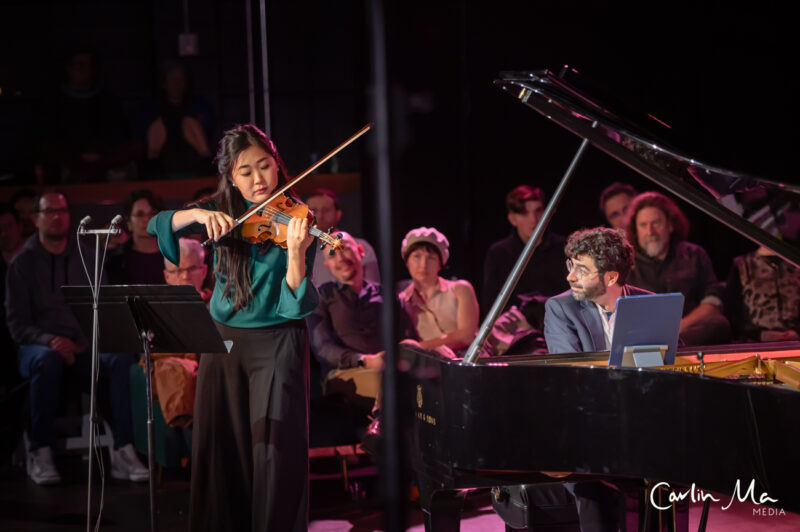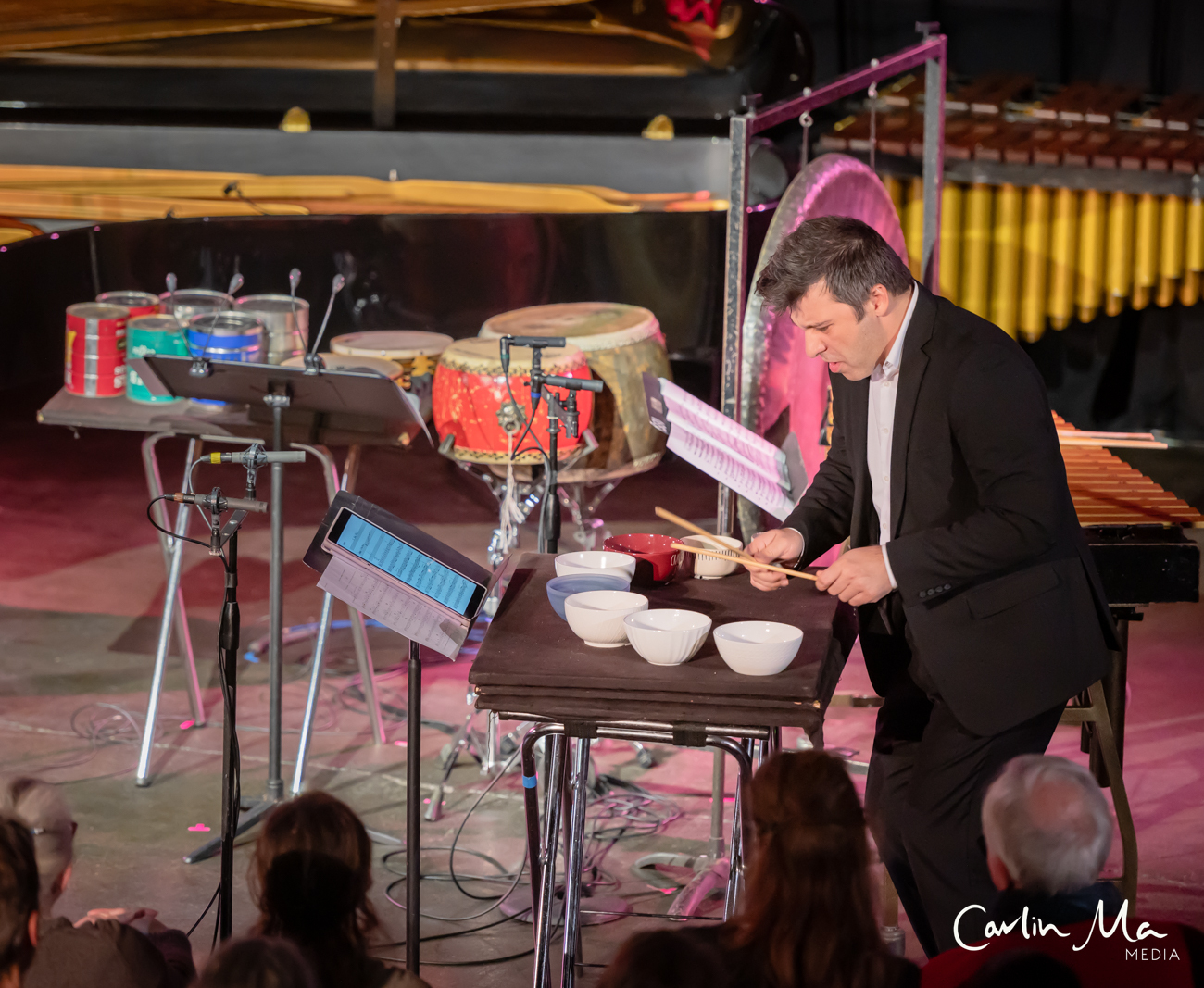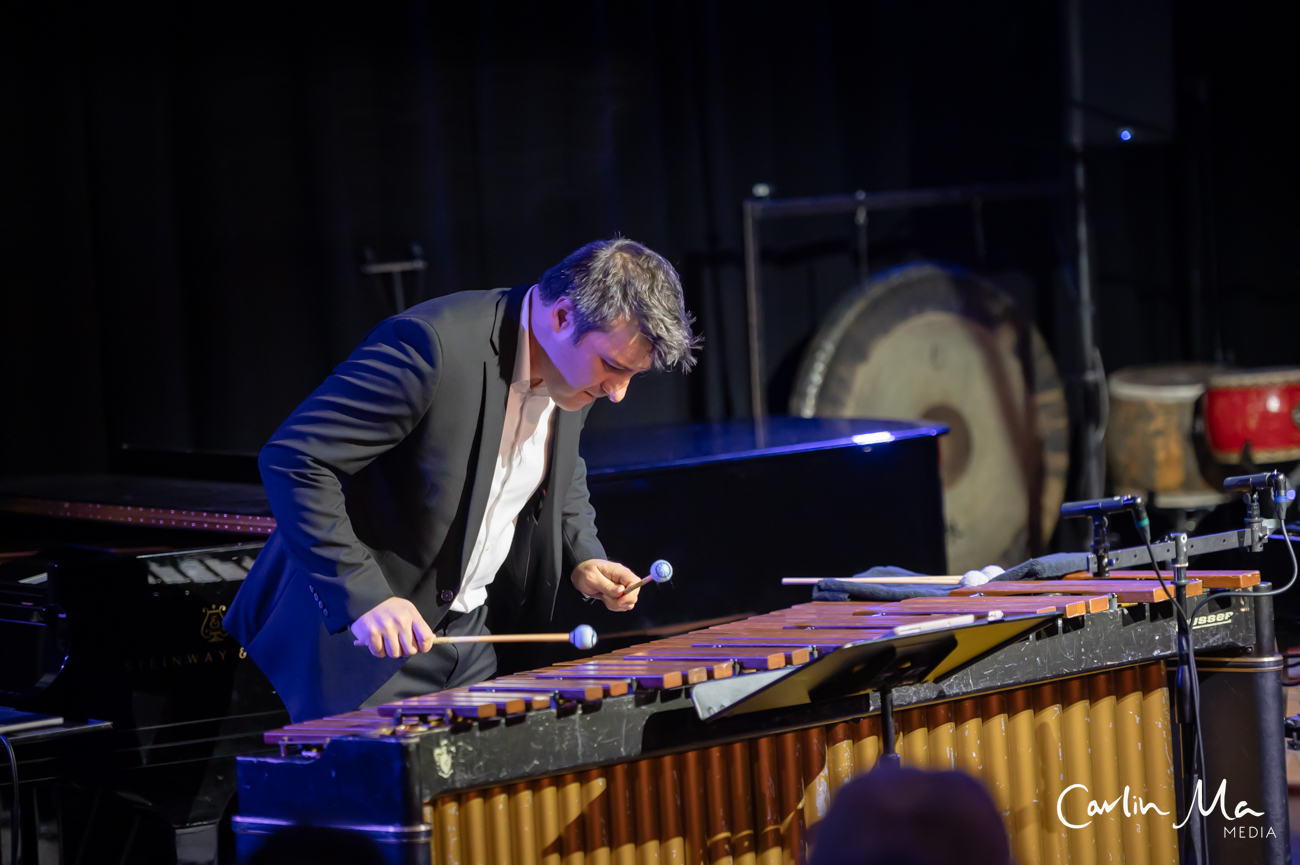Inspired by Gamelan, and A Unique Approach to Musical Presentation.
Review of Inspired by Gamelan at Emerald City Music
Written by TeenTix Newsroom Writer Mickey Fontaine and edited by Teen Editorial Staff Member Anna Melomed

In the many centuries it has existed, Western classical music has taken on a set of firm conventions that permeate mainstream classical culture. This is what makes classical music intimidating for inexperienced listeners. They are expected to act in a way that they are not accustomed to, keeping them from engaging with it. This strict culture hasn’t always been the norm, and it doesn’t have to be today. There is an increasing prevalence of classical venues that seek to establish a more open and inclusive environment.
I got to experience this when I saw Inspired by Gamelan, a unique collection of modern classical music that draws inspiration from Indonesian gamelan, at Emerald City Music. ECM is a non-profit chamber music organization that presents an eclectic range of classical music in a laid-back, intimate environment.
After seeing this show, ECM’s unique atmosphere stuck with me. To get a deeper understanding of ECM and its motivations, I reached out to violinist, artistic director, and co-founder Kristen Lee to get an inside perspective into both Inspired by Gamelan and their methods of presentation.
“At the time of our founding, there was a lot of buzz with all the tech companies. They were recruiting a lot of young people, and we saw an opportunity there to give them a space to get integrated with chamber music. So that was the reason why, instead of going into a concert hall and doing it the traditional way, we wanted to plug ourselves into the middle of Catholic Union, just a couple blocks from the headquarters of Amazon, and create concerts that with an open bar and no stage that welcomed newcomers,” Lee said, describing what motivated her to co-found ECM.
Creating accessible, open spaces like this is important to a healthy classical music scene. It allows people to get introduced to it in a low-stakes environment, which increases awareness and opens opportunities for its enjoyment.
Their welcoming atmosphere didn’t just feel like an aesthetic. It was complemented by the presentation of the music. The performers introduced each piece, cracked jokes, and interacted with one another. They didn’t hide behind music, they shared their artistic passion with the audience.
“We trust our listeners, and let them enjoy the music how they want to. I find that this let’s people really connect with the music,” Lee commented.
The show was introduced with an unannounced Bulgarian drum solo, where the percussionist, Svet Stoyanov, walked through the audience from the front of the house to the performance area while drumming. This immediately confirmed my suspicions that I was not seeing a typical classical concert.
Next was one of my favorite pieces of all time, Steve Reich’s Electric Counterpoint, a pinnacle of minimalist writing that explores the complex interplay between overlapping diatonic melodies. This piece is usually played on electric guitar, but Stoyanov’s performance was on a marimba and a vibraphone. I wouldn’t think the warm timbre of either would be able to match the sharp, bright tone achieved on the electric guitar, but Stoyanov managed to build on the original and give it a unique character.
This moved into Maurice Ravel’s Miroirs, which I hadn’t heard before the show. The pianist, Michael Stephen Brown, introduced the piece and explained the title and theme of each suite, even giving his interpretation of their meaning in the music. In his performance, he perfectly captured the contrast between Miroir's fierce dissonance and its gentle, understated beauty. This suite was not in the program from the start. It was added on after a scheduling error. This came as a surprise to me, as it fits so naturally into the program. Lee described how they managed to work around the conflict and maintain the intent of the program by saying, “Michael Stephen Brown happened to have been touring Ravel’s Miroirs, which fit with the gamelan premise, so that's why we were able to implement it so quickly. It’s a testament to how common gamelan vocabulary is in modern classical music.”
After the intermission, Lee dueted with Brown on Birdsong for Violin and Piano, a piece specifically written for Lee by Vivian Fung. Lee described the challenges of playing this piece by saying, “The violin is a very lyrical, melodic instrument, and this piece demands a lot of power and rhythm in my playing rather than melody. It’s very athletic, so I need to warm up a lot beforehand or I will get tired.”
She later describes the contrast between the pieces' different parts, saying “There were movements that were repetitive and precise, then very free, improvisatory sections. Vivian asked for a lot of grit and overplaying to create sounds that aren't necessarily the melodic sounds you get out of the violin, but rather more noises.”

In the final piece, the three united to play Lou Harrison’s Varied Trio for Violin, Piano and Percussion. They introduced it by explaining its extended techniques, such as the use of found objects and piano body percussion, with Stoyanov explaining how that morning he had to search for a bowl in Home Depot that matched the microtonal pitch needed for the percussion. This piece perfectly complemented each player's sound and acted as a thrilling finale for the show.
While the music blew my mind, what stuck with me was how they presented it. I was curious how ECM fit into the evolution of classical music presentation. Lee answered this by saying, “The conversation of how to cultivate a different kind of concert setting that's more intimate and immersive is international and ongoing, it’s not just here and not just now.”
She later said, “When you put all these rules and boundaries in place about how you’re supposed to enjoy the music, I think it makes people more uncomfortable. We try to take those boundaries away.”

I asked if ECM sought to create change in the culture of classical music, to which Lee said,“Not really, no. We’re more trying to be a part of something that’s already changing. This kind of environment isn’t unique to ECM, in the last five years I’ve been seeing it more and more, so I think we’re just giving people what they want and following the natural evolution of classical music.”
Inspired by Gamelan examined foundational works of modern classical music through a cross-cultural lens, giving me new insight into music I thought I knew well. Within arms reach of the musicians, I felt truly connected to the performance. It was a conversation with the audience, rather than a monologue. Emerald City Music’s type of environment brings accessibility and intimacy to classical music, welcoming new people to enjoy its rich history and exciting future.
Lead Photo Credit: Courtesy of Carlin Ma Media
The TeenTix Newsroom is a group of teen writers led by the Teen Editorial Staff. For each review, Newsroom writers work individually with a teen editor to polish their writing for publication. The Teen Editorial Staff is made up of 5 teens who curate the review portion of the TeenTix blog. More information about the Teen Editorial Staff can be found HERE.
The TeenTix Press Corps promotes critical thinking, communication, and information literacy through criticism and journalism practice for teens. For more information about the Press Corps program see HERE.


